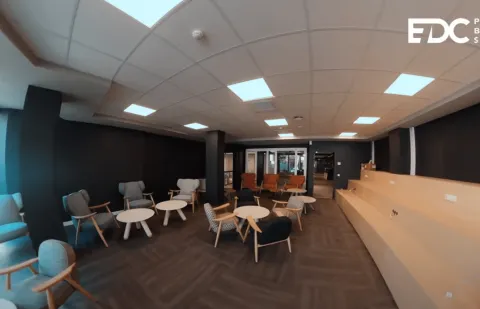
L’Occitane en Provence: Omnichannel, a new challenge for the customer relationship
TOSSAN Vessélina, CROZE-SCARDULLA Françoise (2017)
Cas CCMP, avril 2017
L’Occitane en Provence is a company created in Manosque in the south of France in 1976 and it is the second biggest cosmetics trade name in France after Yves Rocher. Bought by an entrepreneur in 1996, it rapidly developed in France and in international markets taking advantage of the growth of natural cosmetics and the image of Provence.
The objective of the case is to entice students to reflect upon the differences among big brands that are positioned on nature and to get them deeper knowledge about omnichannel strategy and its ability to create value for the consumer and the company.
The student who solves the case is placed in a position of a customer relationship manager at l’Occitane in Provence. As nowadays digital tools have a strong impact on retailing and customer relationship management the mission is to study if the integration of the different channels made by l’Occitane in Provence (stores, website, social networks) allows this brand to optimize exchanges with the customers.
Therefore students are requested:
- To make a brand diagnosis of l’Occitane in Provence on French market of perfumes and cosmetics, stating differences with other natural brands like Yves Rocher, Caudalie, Nuxe and The Body Shop. Elements about the story and the strategy of these brands are provided in the case and students may browse their websites. Des éléments sur l’histoire et la stratégie de ces marques sont fournis dans le cas.
- Define the brand marketing strategy (target, positioning) and recommend actions on product policy, price policy, promotion policy
- How is the omnichannel retailing strategy used by l’Occitane en Provence creating value for the consumer?
- How would you improve place policy?
L’Occitane en Provence belongs to these producer-retailer brands that according to Sannié (2009) can invent a store fully dedicated to their products, in which services, presentation, prices, animation, welcoming make an unique coherent simple experience with a limited so a facilitated choice » The direct link to the consumer allows a permanant and very concrete follow up of the consumer and its expectations and behaviors, which gives a sustainable competitive advantage. This model creates entry barriers as it closes a captive network and builds differentiated know hows.
The case allows to reflect on the differences between multichannel retailing, cross channel retailing and omni-channel retailing. Multichannel retailing is the juxtaposition of channels without interdependence (Barba, 2011). Cross-channel retailing strategy consists in eliminating disruptions, whatever their nature (physical, emotional, economical, cognitive) as the client changes channels throughout a single experience with a brand name (Vanheems, 2010). Services like click and collect, click to chat, connected store fall in this category. Omnichannel strategy, an asset for l’Occitane in Provence, uses digital as physical channels, including social networks, computers, smartphones in a seamless way for the consumer and in a common intent, i.e. to ensure global sales perfomance and a strong and lasting relationship with the consumers (Belvaux, Notebaert, 2015).
When thinking of value creation for the consumer, you can rely on 3 types of values defined by A. Rivière et R.Mencarelli (2012), like :
- Purchasing value before buying the good
- Merchandising value perceived while visiting a point of sale or browsing the internet
- Consumption value: perceived while or after using the product
La valeur de magasinage notamment peut être analysée à travers les 3 composantes de la production d’expérience dans une stratégie omnicanal (Belvaux, Notebaert, 2015) :
- The scenery with the dramatization of the point of sale
- The plot: the product or brand history and story telling
- L’action: les relations entre le consommateur et le produit.

